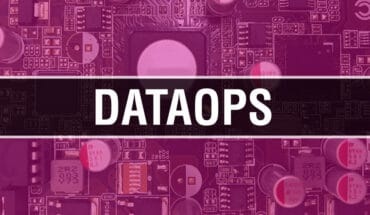
In this week’s real-time analytics news: Dell Technologies expanded its line of systems for generative AI.
Keeping pace with news and developments in the real-time analytics market can be a daunting task. Fortunately, we have you covered with a summary of the items our staff comes across each week. And if you prefer it in your inbox, sign up here!
Dell Technologies announced the expansion of its Dell Generative AI Solutions portfolio. The Dell Validated Design for Generative AI with NVIDIA for Model Customization offers pre-trained models that extract intelligence from data without building models from scratch. The systems combine compute power with storage options and now support both model tuning and inferencing. That allows users to deploy GenAI models using infrastructure more quickly, including the Dell PowerEdge XE9680 or the Dell PowerEdge XE8640, with a choice of NVIDIA Tensor Core GPUs and NVIDIA AI Enterprise software, which offers frameworks, pre-trained models, and development tools, such as the NVIDIA NeMo framework, and Dell software.
Real-time analytics news in brief
The Linux Foundation announced that its Project Nephio, an open-source initiative of partners across the telecommunications industry working towards true cloud-native automation, has joined the LF Networking (LFN) project umbrella. Nephio’s induction into LFN will bring closer collaboration, an expansion of shared resources, and more simplified and streamlined governance. Nephio joins LFN at the “graduated” lifecycle tier, meaning it has met specified criteria for lifecycle maturity, alongside other graduated LFN projects Anuket, ONAP, OpenDaylight, and FD.io.
IBM unveiled the next evolution of its managed detection and response service offerings with new AI technologies, including the ability to automatically escalate or close up to 85% of alerts. The new Threat Detection and Response Services (TDR) provide 24×7 monitoring, investigation, and automated remediation of security alerts from all relevant technologies across a client’s hybrid cloud environments – including existing security tools and investments, as well as cloud, on-premises, and operational technologies (OT). The managed services are delivered by IBM Consulting’s global team of security analysts via IBM’s advanced security services platform.
Alteryx announced new Alteryx AiDIN innovations, including AI Studio. Alteryx AI Studio seamlessly integrates with Alteryx Designer so customers can easily consume their models through existing workflows and construct applications with a conversational interface. Further, Alteryx AI Studio is designed to help safeguard sensitive information and facilitate data security and compliance by giving customers full control of their LLM lifecycle and the option to host and manage the LLM within Alteryx or in their own environment.
AWS announced the general availability of DataZone, its data management service to simplify access to trusted data introduced last year. For the GA release, AWS made several improvements. The solution includes a data portal, a data catalog, data projects and environments, and a governance and access control layer. These can be used to catalog, discover, share, and govern data, no matter where it resides. With the general availability of the solution, AWS added the capability to customize the metadata generation using machine learning, and users can bring any type of asset to the catalog using APIs.
Azion announced the availability of its new Real-Time Metrics features through its Observe product suite. The upgraded features provide seamless insights with powerful real-time visualization into application performance, availability, and security for better observability within organizations. With the ability to run complex, faster queries in one click, the solution provides new, advanced features and filters that allow for more detailed context on graphs on an enhanced interface design.
Azul announced Code Inventory, a new feature of Azul Vulnerability Detection that provides developers and DevOps teams a precise catalog of the source code used in production by Java applications, making it easy to accurately identify dead and unused code for removal. Available now, Code Inventory collects information in production with no performance penalty, requires no changes to Java applications, and is included at no additional charge for Azul Vulnerability Detection customers.
Boomi announced Boomi GPT, the first offering available in the Boomi AI suite. Customers can use Boomi GPT’s natural language prompt to ask Boomi AI to build integrations, APIs, or master data models. Acting as a knowledgeable assistant or “copilot,” Boomi GPT then designs an outline of the requested integration or other software, which users can accept or modify, greatly accelerating the work of building connections and automations to drive business results.
LogicMonitor announced the launch of Dexda, an AI solution for Hybrid Observability. Using machine learning and Natural Language Processing (NLP) to automate insights and deliver a contextualized experience, LogicMonitor’s Dexda empowers ITOps teams to identify problems, determine the root cause of those problems, and prevent events from exploding into business-critical incidents.
NucleusAI emerged from stealth and launched a 22-billion-parameter LLM that outperforms all the models of similar size. The LLM was pre-trained on a context length of 2,048 tokens, and trained on a trillion tokens of data, from large scale deduplicated and cleaned web data, Wikipedia, Stack Exchange, arXiv, and code. This diverse training data ensures a well-rounded knowledge base, spanning general information to academic research and coding insights.
The OpenStack community released Bobcat, the 28th version of the widely deployed open-source cloud infrastructure software. OpenStack is central to the LOKI stack (Linux, OpenStack, and Kubernetes Infrastructure), the open-source standard for running modern cloud infrastructure. Comprising 10,476 changes authored by over 580 contributors, OpenStack Bobcat includes numerous features added in response to operators engaging directly with the upstream community.
Quickbase announced Quickbase AI, a new suite of AI-powered capabilities embedded into the Quickbase platform. The solution gives business users the power to build applications quickly and easily that connect data and uncover insights. These AI capabilities are now available on a limited basis across the Quickbase platform, both for existing and prospective customers.
The R Street Institute is launching a six-month-long working group bringing together experts from government, the private sector, academia, and civil society to examine use cases; existing regulatory and legislative proposals; and best practices and possible paths forward for policymakers and their staff, as well as the broader community, during this innovative and transformative era. The group was formed to address the expected rise in cybersecurity threats owing to the rapid adoption of AI-driven technologies.
Partnerships, collaborations, and more
C3 AI announced a new partnership with ESG Book. The collaboration combines C3 AI’s AI-enabled ESG application with ESG Book’s suite of sustainability data to provide sustainability teams within enterprises with data-driven analytical capabilities.
data.world unveiled a new partnership with Sigma. The integration combines the speed and flexibility of Sigma with the governance and cataloging capabilities of data.world, providing joint customers with greater trust in their data visualizations and reporting.
Docker, together with partners Neo4j, LangChain, and Ollama, announced a new GenAI Stack designed to help developers get a running start with generative AI applications in minutes. Eliminating the need to search for and cobble together and configure technologies from different sources, the GenAI Stack is pre-configured, ready-to-code, and secure with large language models (LLMs) from Ollama, vector and graph databases from Neo4j, and the LangChain framework. Docker also announced its first AI-powered product, Docker AI.
Habu announced an agreement with NCSolutions (NCS) to harness NCS’s consumer purchase data within Habu’s data clean room platform. Brands will be able to seamlessly unlock and accelerate new insights to fuel CRM enrichment, profiling and analytics, modeling, measurement, and more.
Robust Intelligence announced a partnership with MongoDB to help customers efficiently secure generative AI models enhanced with enterprise data. The offering combines Robust Intelligence’s real-time AI Firewall with MongoDB Atlas Vector Search for an enterprise-ready solution that enables responsible innovation.
SnapLogic announced it is working with Amazon Web Services (AWS) to expand the capabilities of SnapGPT, SnapLogic’s generative integration interface. As part of this collaboration, SnapLogic will make Anthropic’s cutting-edge Large Language Model (LLM), Claude 2, offered by Amazon Bedrock, available within the SnapGPT platform.
Teradata and ActionIQ announced a new joint offering for marketing and customer experience (CX) activations for Teradata VantageCloud customers. Together, the two companies aim to democratize access to customer data across the enterprise while providing technical teams with enhanced control.
UiPath and Teradata announced a partnership that will allow enterprises to automate complex data applications directly, seamlessly, and securely at the source—from dashboards to generative AI to large language models (LLMs).
Zapata AI announced a partnership with Mila – Quebec AI Institute. The collaboration will contribute to the development of advancements in various areas of machine learning and quantum algorithms and bolster the value that can come from these innovative technologies.
If your company has real-time analytics news, send your announcements to ssalamone@rtinsights.com.
In case you missed it, here are our most recent previous weekly real-time analytics news roundups:
- Real-time Analytics News for the Week Ending September 30
- Real-time Analytics News for the Week Ending September 23
- Real-time Analytics News for the Week Ending September 16
- Real-time Analytics News for the Week Ending September 9
- Real-time Analytics News for the Week Ending September 2
- Real-time Analytics News for the Week Ending August 26






























